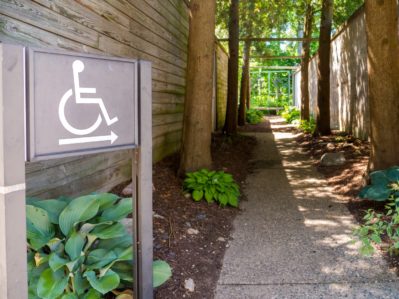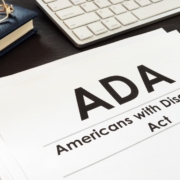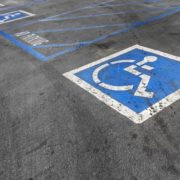How Is ADA Enforced?
Signed into law to protect people with disabilities from discrimination, the Americans with Disabilities Act (ADA) includes a variety of accessibility requirements. It covers everything from the width of pedestrian walkways to the slope of pedestrian ramps. It also covers the size and spacing of truncated domes on detectable warning surfaces. For any owner of a business or facility serving the general public, ADA enforcement can have a large impact.
California enacted the ADA in 1992. Since then, there have been more than 20,000 ADA-related lawsuits. The California Building Code and ADA have set a penalty of at least $4,000, plus attorney’s fees, for not meeting accessibility requirements. Payouts can be even higher than that. Every year, litigation costs California business an estimated $20 million.1
Who Enforces the ADA?
In general, ADA regulations are enforced by the U.S. Department of Justice (DOJ). The regulations covered include those governing state and local government services under ADA Title II and public accommodations under Title III.
In addition to the DOJ, other agencies enforce the ADA. These include:
- The Department of Labor (DOL)
- The Equal Employment Opportunity Commission (EEOC)
- The Department of Transportation (DOT)
- The Federal Communications Commission (FCC)
The DOL’s Office of Disability Employment Policy provides technical assistance on ADA compliance, but its Office of Federal Contract Compliance Programs and Civil Rights Center is tasked with enforcing ADA requirements. To file a direct complaint against an employer, a complainant should contact an EEOC field office in their city, while violations involving telecommunications services should be referred to the FCC. The DOT enforces transit-related regulations.
Many court cases involving ADA violations have been tried by state and local governments. Senate Bill 1608 protects businesses against litigation since ADA lawsuits have become so commonplace in California. The law allows business and property owners to have their facilities inspected for access compliance. Any inspection must be performed by a Certified Access Specialist.
Inspections can protect against unwarranted lawsuits and identify issues that can be fixed to make a facility ADA-compliant. They can also provide a time frame to make corrections and establish an intent to correct any existing accessibility issues.
Why Is the ADA Enforced?

Enforcing the ADA is essential as violations are all too common, even in 2020. California has more complaints than any other state, with common violations being a lack of accessibility signs or proper symbols at entrances and exits. Slopes too steep for individuals with mobility issues are problematic as well. So are non-compliant stairways with incorrect riser or handrail heights and parking spaces too far from accessible routes, which are not wide enough, and that lack designated signage.
Other issues warranting ADA enforcement include work surfaces, service counters, and bars that don’t meet minimum height requirements. Also, a facility with seating not designed to accommodate wheelchair users is in violation of the ADA.
The ADA Cheat Sheet provides an overview of what to look for when inspecting your facility for compliance. Some considerations include accessible ramp configurations, stairway handrails, doors, lavatories, water fountains, public telephones, and rooms.
To learn more about ADA enforcement and how ADA Solutions can help meet the latest ADA requirements for 2020, call us at (800) 372-0519.












